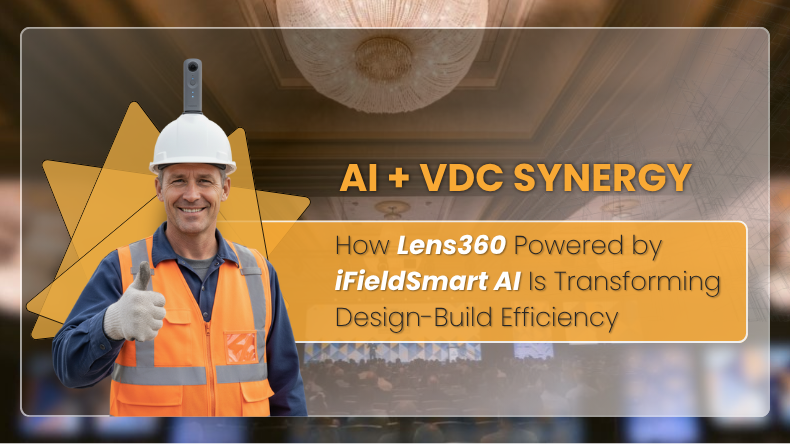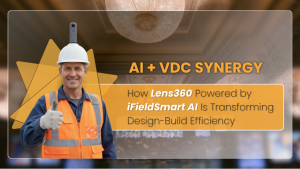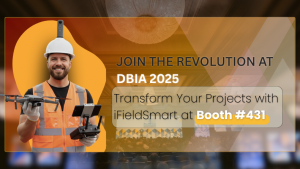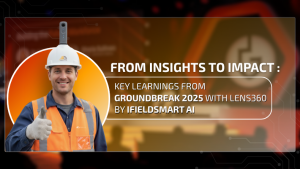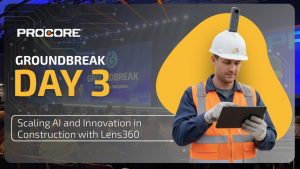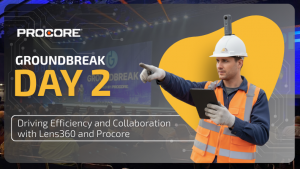Reading Time: 8 minutes
DBIA 2025 Isn’t Just Another Conference
DBIA 2025 isn’t just another conference where people talk about what might work someday. It’s where the Design-Build industry shows up to see what’s actually working right now.
This year, the conference lands at the MGM Grand in Las Vegas, Nevada, from November 5-7. If you are a GC, project manager, superintendent, or owner trying to stay ahead of the curve, this is where you need to be.
The sessions this year? They’re focused on real problems. Efficiency. Collaboration. Getting more done with the same team. And here’s what nobody’s saying out loud: you can’t solve 2025 problems with 2015 tools.
Work Smarter, Not Harder
iFieldSmart empowers your team with AI-driven efficiency to simplify scheduling, boost collaboration, and keep projects on track.
Schedule a MeetingHere’s the thing about construction: everyone’s talking about AI, but not everyone’s actually using it right.
Virtual Design and Construction. Walk onto most job sites, and what do you see? The same coordination headaches. The same RFI delays. The same clash detection issues are eating into your schedule.
What if there is a better way? And you can see it live at DBIA 2025 in Las Vegas this November.
The VDC Problem Nobody Talks About
You already know VDC is important. Virtual Design and Construction has been the promise for years now. Model it first, build it right, avoid costly mistakes. Great in theory.
But here’s what happens in reality: your VDC team creates these beautiful models. Your field team gets out there. And somehow, things still don’t match up. The model says one thing. The site says another. Now you’re stuck in the middle, trying to coordinate between what was designed and what’s actually buildable.
Sound familiar?
The previous VDC tools were primarily designed for office use rather than field applications. The tools didn’t act as a bridge between the digital plan and physical reality.
The AI links the gap between the Design-Build workflow. AI assists teams in working more intelligently, moving more rapidly, and achieving more effective outcomes.
The time teams spend on these tasks:
- Walking the site to document progress
- Comparing as-built conditions to the model
- Tracking down information across emails, photos, and meeting notes
- Creating outdated reports the moment you finish them
- Coordinating between trades that all have different information
What if AI could handle the work? What if it could scan your site, compare it to your VDC model, flag issues before they become problems, and give everyone on your team real-time access to accurate information? That’s not future talk. That’s happening right now.
How AI and VDC Work Together
The magic happens when you stop treating AI and VDC as separate things. They are not competing technologies. They’re two halves of the same solution.
VDC gives you the digital blueprint. AI gives you the intelligence to execute it in the real world. It creates a powerful feedback loop, and that keeps getting smarter.
Here is how it looks in practice:
On design: Teams can assess the VDC models and find potential problems before breaking ground. Clash detection? That’s table stakes now. Modern AI can predict constructability issues, suggest value engineering opportunities, and even optimize your sequencing.
In the field: AI-powered tools can capture site conditions. No more manual documentation. No more “I thought someone else had taken that photo.” The system watches, learns, and keeps everyone aligned.
During coordination: When the MEP trades need to coordinate, AI can identify conflicts across disciplines instantly. What used to take a coordination meeting and three rounds of RFIs? Now it’s handled before anyone shows up at the site.
AI Applications That Actually Save Time
AI isn’t just some abstract concept. Here’s what it’s doing for Design-Build teams right now:
- AI-Powered BIM Takeoff: Remember spending hours doing manual quantity takeoffs from the models? AI can scan your BIM files and generate accurate takeoffs in minutes. Material counts, labor estimates, and cost projections are all automated. Your estimators can focus on strategy instead of counting widgets.
- Scope Gap Analysis: Here’s a big one. AI compares expert-verified design documents, specifications, and models to identify what’s missing or conflicting. Those gaps that usually surface during construction? You catch them during preconstruction instead. That’s the difference between a change order and a smooth build.
- Intelligent AI Chatbots: Your team sends hundreds of emails a week. Questions about specs, RFIs, and clarifications. AI can scan your project documentation and answer routine questions instantly. Need to know what the spec says about concrete curing time? Ask the chatbot. It pulls the answer from your documents in seconds.
- Constructability Review: Before you commit to a design, AI + Experts Review runs through constructability checks. Can your trades actually build what’s shown? Are there sequencing conflicts? Will materials fit through door openings? The system flags issues that might be missed, especially on complex projects.
- VDC Solutions with Living 3D Models: This is where VDC really shines. The 3D models are no longer static. They update based on field conditions, incorporate as-built data, and give every trade current information. Clash detection becomes easy. Coordination is visual and intuitive. Everyone sees the same thing.
What Makes Lens360 Different
Lens360 by iFieldSmart takes it into one tool that the teams can actually use.
What this really means is: The superintendents aren’t juggling five different apps anymore. The VDC team isn’t rebuilding models based on outdated field reports. Everyone’s working from the same source of truth, updated in real time.
The iFieldSmart platform is specifically for Design-Build teams who are tired of tools that look great in demos but fall apart on actual job sites. The AI handles the tedious stuff, BIM takeoffs, scope analysis, and answering repetitive questions. The VDC tools keep your 3D models accurate and accessible. The constructability reviews catch problems before they cost you money.
The Design-Build Efficiency Revolution
Design-Build, as a delivery method, was supposed to fix coordination problems. And it does when you have the right tools.
The best Design-Build teams in 2025 share three things:
- Integrated workflows where information flows from design to field without friction
- Proactive problem-solving where issues get caught early, not during the punchlist
- Data-driven decisions based on what’s actually happening on site
AI and VDC together make all three possible. But you need to see it to believe it.
| Traditional Approach | AI + VDC Approach |
|---|---|
| Manual BIM takeoffs | AI-automated quantity extraction |
| Weekly progress photos | Real-time site scanning |
| Manual clash detection | Automated conflict identification |
| Reactive problem solving | Predictive constructability review |
| Email chains for answers | Intelligent chatbot responses |
| Siloed information | Unified 3D VDC models |
| Delayed reporting | Instant insights |
| Scope gaps found in the field | AI scope analysis during design |
Why You Need to Visit Booth 431
At Booth 431 in DBIA 2025. See how this actually works.
Here is what you’ll get at the booth:
- Live demonstrations of AI scanning and VDC integration. Bring your toughest coordination challenge. We’ll walk through how the technology handles it.
- See the AI tools in action: Watch how BIM takeoff automation works. See the scope gap analysis to catch issues in real time. Test the email AI and chatbot with your actual project questions. This isn’t a canned demo, it’s your problems, our solutions.
- Constructability review: You’ll see how constructability issues got flagged early. See how 3D VDC models helped trades coordinate before conflicts became costly mistakes.
- Real project examples from contractors like you. See the before and after. The time saved. The conflicts were avoided. The money is not wasted on rework.
- Hands-on experience with the tools. Pull out your phone. See how teams can put it to work on the projects right away.
- Honest conversations about the tools’ work. AI helps to solve a lot. Let’s talk about your specific pain points.
What to Expect at DBIA 2025
The conference itself is packed with value. Over three days, you’ll find:
- Technical sessions on Design-Build best practices
- Networking with owners, contractors, and industry leaders
- Case studies from projects that got it right
- Innovation showcases featuring the latest technology
But between sessions? Hit the expo floor. Make your way to Booth 431. We are in a prime spot, easy to find, and trust me, worth the walk.
The Bottom Line
AI and VDC aren’t competing with each other. They’re not separate strategies. They’re two parts of the same solution to the coordination and efficiency problems that have plagued Design-Build projects forever.
The technology exists right now. The results are proven. The question is whether you’re going to be early to adopt or late to catch up.
DBIA 2025 at the MGM Grand in Las Vegas is your chance to see what’s possible. And Booth 431 is where you’ll see it in action.
Ready to transform your Design-Build efficiency? The future of construction is here. Join us at Booth #431 during DBIA 2025 in Las Vegas (November 5–7) to explore how AI-driven VDC technology is redefining project delivery.
